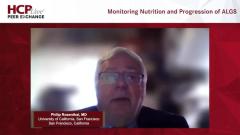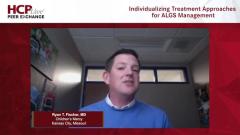
Using Maralixibat for the Management of Pediatric ALGS
Regino Gonzalez-Peralta, MD, reviews clinical implications from the phase 2 ICONIC trial evaluating the use of maralixibat for the management of Alagille syndrome in pediatric patients.
Episodes in this series

William F. Balistreri, MD: You mentioned clinical data. Reggie, are you familiar with the published data, especially from the ICONIC trial, which allowed the FDA approval of these drugs for children with Alagille syndrome?
Regino P. Gonzalez-Peralta, MD: I have some knowledge. I love the name of the trial. ICONIC sounds iconic. Interestingly, it’s one of what I call backward placebo-controlled trials. It’s a medication withdrawal trial—that’s the fancy name—where everybody up front received the drug openly, indifferent to the usual trial where half the patients get the drug up front and half don’t. In this one, everybody got it up front. Supposedly, this improves or diminishes the subjective bias of itching.
Patients received maralixibat 380 µg/kg once a day for 18 weeks. Half the patients were continued on therapy, and in the other half, the medicine was removed. No one knew who was in which group. That was done for 4 weeks. Then everybody got back on open label for an extended period of time, up to 48 weeks. That’s where the ICONIC trial stopped. There’s an ongoing long-term arm of this trial, but ICONIC stopped at 48 weeks.
The take-home message was that in the first 18 weeks of open label, their ItchRO [Itch Reported Outcome] score dropped by almost 2 points. One point is considered clinically important in validation of the ItchRO, so a drop in 2 points is quite significant. As you might have imagined, during the 2 to 4 weeks where the drug was withdrawn, the effect remained in those who continued on drug. But in those where the drug was withdrawn, their itch scores rose back to baseline, clearly suggesting that this medicine was helping the itch.
Furthermore, after everybody gets on open label again, even the patients on placebo get back on the drug, and their ItchRO scores improve. The differences in improvement during the open labels and placebo are pretty dramatic. If you look at these patients at a year out, about 80% of the patients experienced a greater than or equal to 20% reduction in serum bile acids. Serum bile acid reduction was correlated to improved pruritus.
The medicine showed not only improvement in itch but also improvement in the serum bile acids, which may be getting a little off topic or to the next topic. There’s a conversation about serum bile acids being a biomarker of liver outcome. If you lower your serum bile acids, you might get more bang for your buck. You might get rid of the pruritus, but you might also be able to improve or prevent progression of the liver disease, although that might be a question for another one of these conversations. That’s a summary of the efficacy data of ICONIC.
Of course, you have to talk about adverse events, which did happen. As you might imagine, the most common were GI [gastrointestinal] related. Vomiting, abdominal pain, and diarrhea occurred in 50%-plus of the patients on treatment. Fortunately, these adverse events rarely led to drug discontinuation. They were quite tolerable, so the vast majority of patients were able to complete the trial. In the ongoing long-term arm, that seems to be the norm.
William F. Balistreri, MD: Reggie, thank you for very nicely summarizing it. The drug, of course, was maralixibat.
Transcript Edited for Clarity
Newsletter
Access practical, evidence-based guidance to support better care for our youngest patients. Join our email list for the latest clinical updates.

















